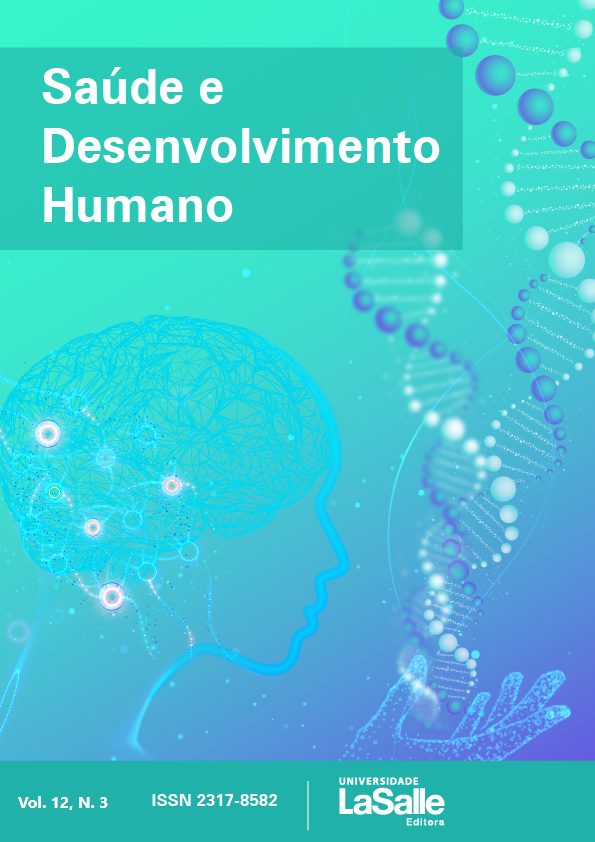Clinical aspects of the phytopharmaceutical potential of caffeine in the control of Alzheimer's disease
DOI:
https://doi.org/10.18316/sdh.v12i3.11173Keywords:
Alzheimer's disease, caffeine, controlAbstract
Introduction: Alzheimer's disease (AD) is the main cause of dementia in the world, representing around 50-70% of cases. Currently, its treatment consists of secondary therapeutic targets, not directly involved with the pathophysiology of the disease. Objective: To verify the phytopharmaceutical potential of caffeine in controlling AD. Methodology: A descriptive study of the literature review type was carried out. The investigative locus was carried out through an electronic search in the Scientific Electronic Library (SciELO), Latin American and Caribbean Center for Health Sciences Information (BIREME-OPAS-OMS), and National Library of Medicine, USA (PubMed). Considering articles published between 2018 and 2023, involving humans and animals. The search for articles was based on the keywords “caffeine and Alzheimer disease”. Results: Of the eight studies selected, four suggested that caffeine has significant neuroprotective activity in an animal model. Five pointed out, with reservations, therapeutic potential in humans, in the prophylaxis of dementia. Conclusion: Caffeine has neuroprotective activity for AD in silico, in vitro and in vivo, but these results cannot yet be ensured as translational, requiring multicenter clinical studies with caffeine alone to investigate its potential usefulness in the treatment of AD.
References
Garre-Olmo J. [Epidemiology of Alzheimer’s disease and other dementias]. Rev Neurol. 1o de junho de 2018;66(11):377–86. Disponível em: https://doi.org/10.33588/rn.6611.2017519.
Villarejo Galende A, Eimil Ortiz M, Llamas Velasco S, Llanero Luque M, López de Silanes de Miguel C, Prieto Jurczynska C. Informe de la Fundación del Cerebro. Impacto social de la enfermedad de Alzheimer y otras demencias. Neurologia. 1o de janeiro de 2021;36(1):39–49. Disponível em: 10.1016/j.nrl.2017.10.005.
Lane CA, Hardy J, Schott JM. Alzheimer’s disease. European Journal of Neurology. 2018;25(1):59–70. Disponível em: https://doi.org/10.1111/ene.13439.
Freire DS, Silva AS da, Borin FYY. A fisiopatologia da doença de alzheimer. Revista Terra & Cultura: Cadernos de Ensino e Pesquisa. 29 de novembro de 2022;38(especial):237–51.
Verghese PB, Castellano JM, Holtzman DM. Roles of Apolipoprotein E in Alzheimer’s Disease and Other Neurological Disorders. Lancet Neurol. março de 2011;10(3):241–52. Disponível em: https://doi.org/10.1016/s1474-4422(10)70325-2.
Escott-Price V, Sims R, Bannister C, Harold D, Vronskaya M, Majounie E, et al. Common polygenic variation enhances risk prediction for Alzheimer’s disease. Brain. dezembro de 2015;138(12):3673–84. Disponível em: https://doi.org/10.1093/brain/awv268.
Bateman RJ, Aisen PS, De Strooper B, Fox NC, Lemere CA, Ringman JM, et al. Autosomal-dominant Alzheimer’s disease: a review and proposal for the prevention of Alzheimer’s disease. Alzheimers Res Ther. 6 de janeiro de 2011;3(1):1. Disponível em: https://doi.org/10.1186%2Falzrt59.
Tiwari S, Atluri V, Kaushik A, Yndart A, Nair M. Alzheimer’s disease: pathogenesis, diagnostics, and therapeutics. Int J Nanomedicine. 19 de julho de 2019;14:5541–54. Disponível em: https://doi.org/10.2147/ijn.s200490.
Śliwińska S, Jeziorek M. The role of nutrition in Alzheimer’s disease. Rocz Panstw Zakl Hig. 2021;72(1):29–39. Disponível em: https://doi.org/10.32394/rpzh.2021.0154.
Zhou X, Zhang L. The Neuroprotective Effects of Moderate and Regular Caffeine Consumption in Alzheimer’s Disease. Oxid Med Cell Longev. 17 de agosto de 2021;2021:5568011. Disponível em: https://doi.org/10.1155/2021/5568011.
Ikram M, Park TJ, Ali T, Kim MO. Antioxidant and Neuroprotective Effects of Caffeine against Alzheimer’s and Parkinson’s Disease: Insight into the Role of Nrf-2 and A2AR Signaling. Antioxidants (Basel). 22 de setembro de 2020;9(9):902. Disponível em: https://doi.org/10.3390%2Fantiox9090902.
M Yelanchezian YM, Waldvogel HJ, Faull RLM, Kwakowsky A. Neuroprotective Effect of Caffeine in Alzheimer’s Disease. Molecules. 10 de junho de 2022;27(12):3737. Disponível em: https://doi.org/10.3390/molecules27123737.
Londzin P, Zamora M, Kąkol B, Taborek A, Folwarczna J. Potential of Caffeine in Alzheimer’s Disease—A Review of Experimental Studies. Nutrients. 6 de fevereiro de 2021;13(2):537. Disponível em: https://doi.org/10.3390%2Fnu13020537.
Stazi M, Lehmann S, Sakib MS, Pena-Centeno T, Büschgens L, Fischer A, et al. Long-term caffeine treatment of Alzheimer mouse models ameliorates behavioural deficits and neuron loss and promotes cellular and molecular markers of neurogenesis. Cell Mol Life Sci. 2022;79(1):55. Disponível em: https://doi.org/10.1007/s00018-021-04062-8.
Schreiner TG, Popescu BO. Impact of Caffeine on Alzheimer’s Disease Pathogenesis—Protective or Risk Factor? Life (Basel). 22 de fevereiro de 2022;12(3):330. Disponível em: https://doi.org/10.3390/life12030330.
Hussain A, Tabrez ES, Mavrych V, Bolgova O, Peela JR. Caffeine: A Potential Protective Agent Against Cognitive Decline in Alzheimer’s Disease. Crit Rev Eukaryot Gene Expr. 2018;28(1):67–72. Disponível em: https://doi.org/10.1615/critreveukaryotgeneexpr.2018021391.
Ruggiero M, Calvello R, Porro C, Messina G, Cianciulli A, Panaro MA. Neurodegenerative Diseases: Can Caffeine Be a Powerful Ally to Weaken Neuroinflammation? Int J Mol Sci. 26 de outubro de 2022;23(21):12958. Disponível em: 10.3390/ijms232112958.
Nehlig A. (1999). Are we dependent upon coffee and caffeine? A review on human and animal data. Neuroscience and biobehavioral reviews, 23(4), 563–576. https://doi.org/10.1016/s0149-7634(98)00050-5
Cabrera, C., Artacho, R., & Giménez, R. (2006). Beneficial effects of green tea--a review. Journal of the American College of Nutrition, 25(2), 79–99. https://doi.org/10.1080/07315724.2006.10719518
Downloads
Published
Issue
Section
License
Copyright (c) 2025 Saúde e Desenvolvimento Humano

This work is licensed under a Creative Commons Attribution-NonCommercial 4.0 International License.
Authors who submit their manuscripts to be published in this journal agree to the following terms:
- Authors retain copyright and grant the journal right of first publication with the work simultaneously licensed under the Creative Commons Attribution License that allows the sharing of work and recognition of its initial publication in this journal.
- By virtue of the articles appearing in this open access journal, articles are free to use, with proper attribution, in educational and non-commercia.


